A Traveler’s Guide to the Qing Eastern Tombs: Immersing in China’s Royal Past
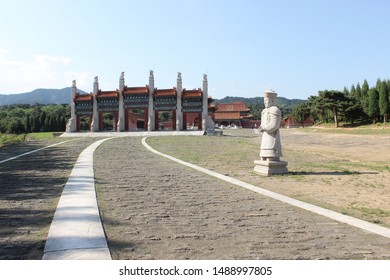
An Essential Guide to Visiting Qing Eastern Tombs
In This Guide
- An Essential Guide to Visiting Qing Eastern Tombs
- The Rich History and Legends of Qing Eastern Tombs
- Main Highlights: What You Absolutely Can’t Miss
- Planning Your Visit: A Practical Guide
- Tickets: Prices, Booking, and Tips
- How to Get There: A Complete Transportation Guide
- Local Cuisine and Accommodation Nearby
- Frequently Asked Questions
- Final Thoughts on Your Trip
Discover the Majestic Eastern Qing Tombs
Nestled in the serene hills of northeast Hebei province, the Eastern Qing Tombs stand as a testament to the grandeur and intricacy of Qing Dynasty burial traditions. As the final resting place of emperors, empresses, and noble figures, this remarkable necropolis offers international travelers a unique window into China’s imperial past—one that is often overshadowed by the more frequently visited Ming Tombs.
A mere 2.5-hour drive from Beijing, these tombs are not just a historical site; they are a journey into the heart of Chinese culture and spirituality. Here, the majestic architecture harmonizes with the surrounding natural beauty, creating an atmosphere of tranquility that invites reflection and exploration.
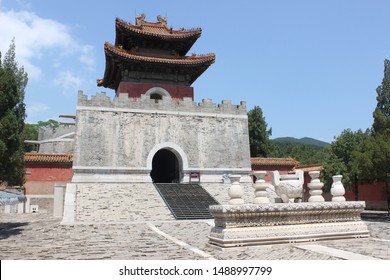
Qing Eastern Tombs.
Visitors can explore the vast complex, which encompasses a variety of tombs, including the famous mausoleums of Empress Dowager Cixi and Emperor Qianlong. Each tomb is adorned with exquisite carvings and intricate designs that reflect the artistic prowess of the era. However, be prepared for the bittersweet contrast of magnificence and decay, as many structures are in dire need of restoration, showcasing the wear of centuries.
Why Choose the Eastern Qing Tombs?
- Rich Cultural Heritage: Unlike the Ming Tombs, the Eastern Qing Tombs provide a more intimate glimpse into the lives of China’s last imperial family, making them an essential stop for history enthusiasts.
- Lesser-Known Gem: Escape the crowds that often flock to Beijing’s more popular attractions. The Eastern Qing Tombs promise a peaceful visit where you can contemplate the stories of the past without the hustle and bustle.
- Scenic Beauty: Surrounded by lush mountains and well-maintained gardens, the site is perfect for leisurely strolls, photography, and moments of quiet reflection.
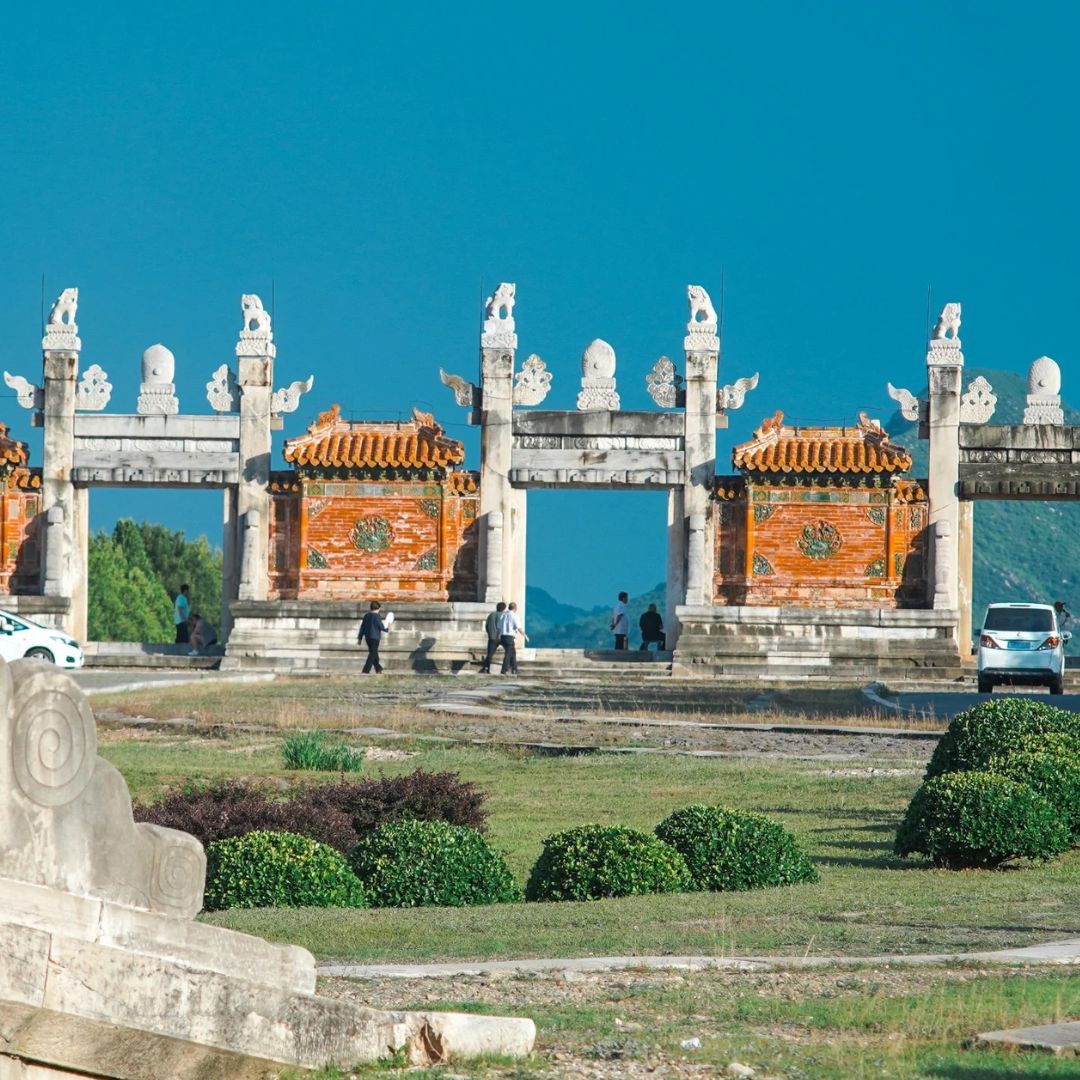
Qing Eastern Tombs.
Tips for Your Visit
- Plan Ahead: Given the vastness of the complex, consider devoting a full day to your visit. Pack food and water to enjoy a picnic amidst the tombs.
- Transportation: Renting a car or bike allows for greater flexibility to explore at your own pace, especially if you wish to visit the nearby Huanghuacheng section of the Great Wall.
- Guided Tours: For a deeper understanding of the site’s significance, consider joining a guided tour, which often includes valuable insights and access to areas not covered in standard visits.
As you step into this realm of ancient emperors and forgotten histories, the Eastern Qing Tombs promise not only a journey through time but also an opportunity to connect with the profound spirituality that has shaped China’s cultural landscape. Whether you are an avid historian or a casual traveler, the echoes of the past await your discovery in this hidden jewel of Chinese heritage.
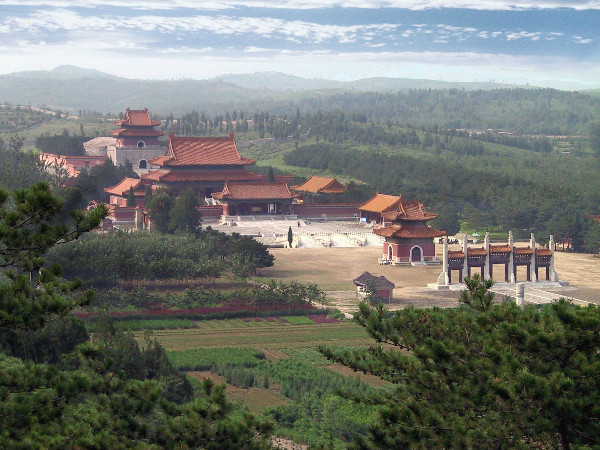
Qing Eastern Tombs.
The Rich History and Legends of Qing Eastern Tombs
The Qing Eastern Tombs, nestled in the serene landscapes of Zunhua, Hebei Province, stand as a monumental testament to the grandeur and intricacies of Qing Dynasty history. This UNESCO World Heritage site, also known as the Eastern Royal Tombs of the Qing Dynasty, is the final resting place of several emperors and empresses, including the famed Empress Dowager Cixi. With its rich tapestry of history and captivating legends, this site offers international travelers an unparalleled glimpse into China’s imperial past.
A Glimpse into History
The Qing Eastern Tombs were established in 1663 and served as the burial site for the Qing emperors from the Shunzhi Emperor to the Guangxu Emperor. Unlike their Ming counterparts, which are located further southwest, the Eastern Tombs were strategically chosen for their picturesque natural setting, surrounded by lush hills and clear waters. This serene environment was believed to be conducive to the spirits of the deceased, reflecting the traditional Chinese belief in harmony between nature and the afterlife.
Among the most notable figures buried here is the Empress Dowager Cixi, a powerful and controversial figure who effectively ruled China during the late Qing Dynasty. Her tomb, known for its exquisite artistry and elaborate decorations, is a highlight for visitors. The story of her life, marked by intrigue and manipulation, adds a rich layer of narrative to the tomb’s significance.

Qing Eastern Tombs.
Architectural Marvels
Visitors to the Qing Eastern Tombs will be captivated by the architectural grandeur that reflects the aesthetics of the Qing Dynasty. The tombs feature a unique blend of Mongolian and Han Chinese architectural styles, characterized by vividly carved stone sculptures and ornate wooden structures. While many buildings have suffered from neglect over the years, the intricate carvings and faded frescoes still whisper stories of their former glory.
Key Structures:
– The Spirit Way: The approach to the tombs is marked by this grand path lined with massive stone statues of animals and officials, symbolizing the guardianship of the emperors’ spirits.
– Cixi’s Tomb: Known as the “Imperial Tomb of the Empress Dowager,” it showcases stunning artistry and a wealth of historical artifacts.
– The Qianlong Tomb: Dedicated to the Qianlong Emperor, this tomb is notable for its grand architecture and lush surroundings.
Legends and Folklore
The Eastern Qing Tombs are not just a repository of history; they are steeped in legends that add an air of mystique. One popular legend tells of a hidden treasure within Cixi’s tomb, believed to contain the vast wealth of the empress. Despite various attempts at excavating the site, the treasure remains elusive, feeding local folklore and inspiring treasure hunters.

Qing Eastern Tombs.
Another captivating tale speaks of the spirits that wander the Spirit Way. It is said that if visitors pay their respects and show reverence, they will be granted good fortune. Many travelers leave offerings at the tombs, hoping to connect with the spirits of the past, blending history with the spiritual traditions of contemporary Chinese culture.
Visiting the Tombs
For those venturing from Beijing, the Qing Eastern Tombs are approximately a two-and-a-half-hour drive, making them an ideal day trip for history enthusiasts. The site features well-maintained paths and gardens, creating a tranquil atmosphere for exploration. While some structures are in urgent need of restoration, the serenity and historical significance of the site overshadow any imperfections.
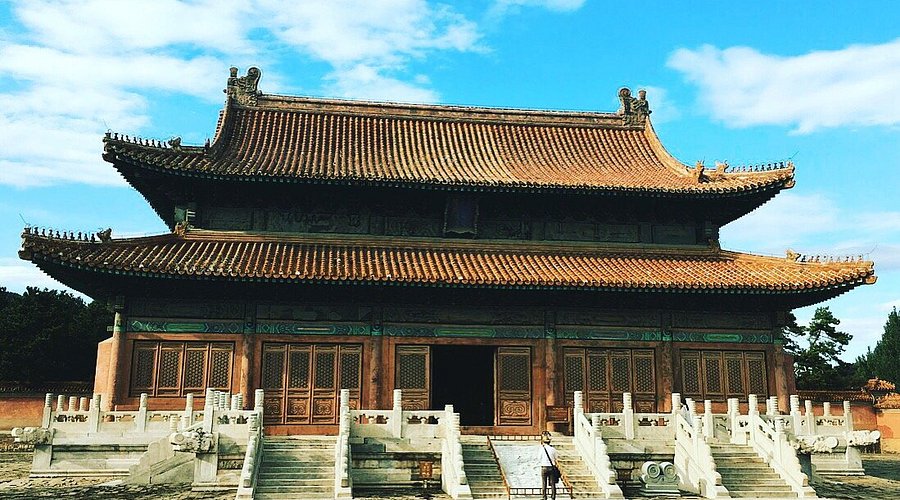
Qing Eastern Tombs.
Conclusion
The Qing Eastern Tombs offer more than just a window into the past; they are a living narrative of China’s imperial history, rich with legends and steeped in cultural significance. Whether you are captivated by the stories of Empress Dowager Cixi, enchanted by the architectural beauty, or intrigued by the legends that linger in the air, a visit to this extraordinary site promises an unforgettable journey through time.
Main Highlights: What You Absolutely Can’t Miss
The Qing Eastern Tombs, located in Zunhua, Hebei Province, stand as a magnificent testament to China’s imperial history and the artistry of royal funerary architecture. As you explore this serene landscape, you’ll encounter captivating elements that reveal the grandeur of the Qing Dynasty. Here’s a guide to the highlights that you absolutely cannot miss during your visit.

Qing Eastern Tombs.
1. Empress Dowager Cixi’s Tomb
One of the most significant mausoleums in the complex, the tomb of Empress Dowager Cixi offers a profound glimpse into the life of one of China’s most powerful women. Known for her influence over the Qing court, her tomb features intricate carvings and a poignant memorial that reflects her legacy. Don’t forget to admire the craftsmanship of the entrance, which showcases detailed artistry that has withstood the test of time.
2. Qianlong Emperor’s Tomb
The tomb of the Qianlong Emperor, who ruled for 60 years, is another must-visit. Its grandeur reflects the emperor’s love for the arts and nature. As you approach the tomb, take time to appreciate the surrounding gardens and the Spirit Way, lined with stone statues that evoke the majesty of the Qing Dynasty. Be sure to capture the stunning architecture that blends harmoniously with the natural landscape.
3. Spirit Way (Shendao)
This ceremonial pathway leads to the tombs and is adorned with life-sized stone statues of animals and officials. The Spirit Way serves as a visual narrative of the emperor’s journey to the afterlife. Renting a bike is highly recommended to leisurely explore this enchanting area, allowing you to appreciate the desolate terrain that enhances the tombs’ magnificence.
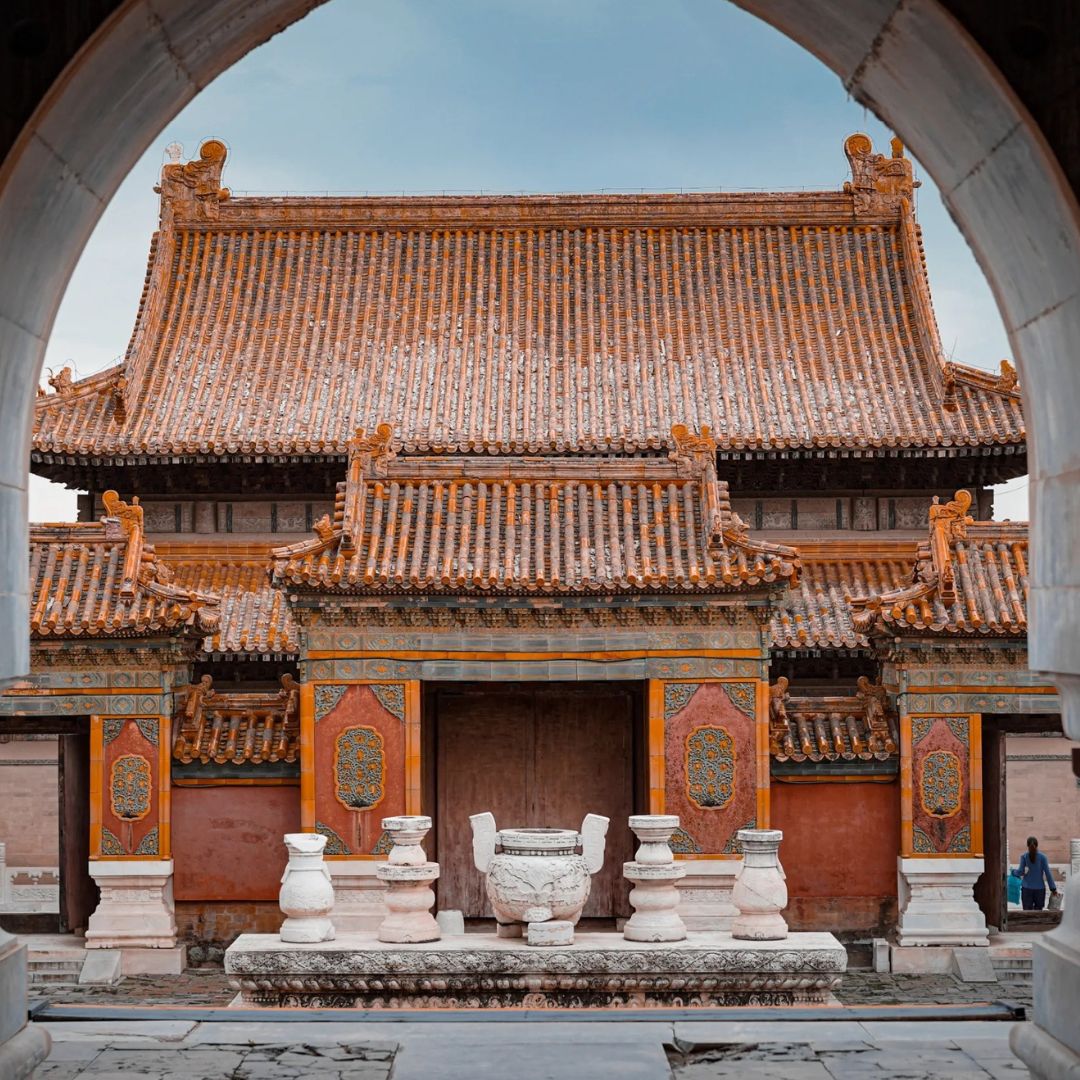
Qing Eastern Tombs.
4. The Tombs Museum
Before embarking on your tomb exploration, visit the on-site museum. Here, you can watch a documentary detailing the looting of Cixi’s tomb, providing context to the grandeur you will witness. The museum exhibits artifacts and historical information that enrich your understanding of Qing burial practices and the significance of these tombs in Chinese culture.
5. Stunning Carvings and Architecture
Throughout the complex, you’ll find numerous buildings adorned with beautiful but weathered carvings. While the vibrant colors of the Ming tombs are absent, the faded ceilings and intricate designs offer a glimpse into the past splendor of Qing architecture. Pay attention to the details in the wooden structures, which tell stories of the emperors and their dynastic traditions.
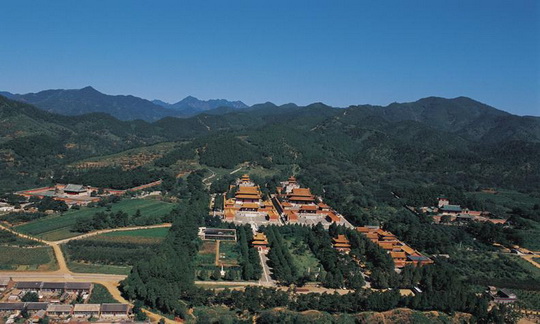
Qing Eastern Tombs.
6. Souvenir Stalls
As you conclude your visit, make sure to stop by the souvenir stalls managed by the descendants of the tomb keepers. Here, you can find unique handcrafted items that serve as wonderful mementos of your visit. Purchasing a souvenir not only supports local artisans but also connects you to the rich history of the site.
7. Day Trip Planning
For an enriching experience, consider making this a full-day trip. The Eastern Qing Tombs are approximately 2.5 hours from Beijing, making it feasible to combine your visit with nearby attractions, such as the Huanghuacheng section of the Great Wall. Pack some food and enjoy a picnic amidst the serene backdrop of the tombs.
Final Thoughts
The Eastern Qing Tombs offer a remarkable journey through China’s imperial past, allowing visitors to immerse themselves in the historical significance and cultural richness of the Qing Dynasty. Whether you’re a history buff or a casual traveler, the tombs promise an unforgettable experience filled with beauty, reflection, and discovery.
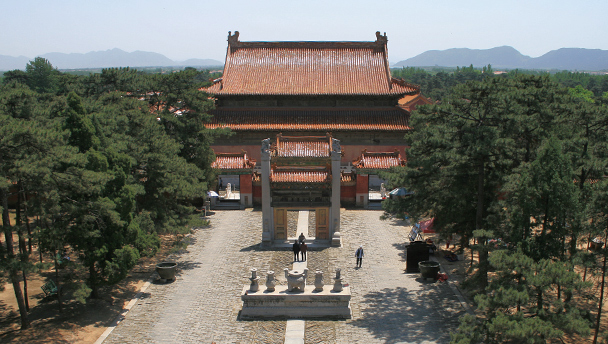
Qing Eastern Tombs.
Planning Your Visit: A Practical Guide
Discovering the Eastern Qing Tombs: Your Essential Travel Guide
Visiting the Eastern Qing Tombs, located in Zunhua, Hebei Province, offers a profound glimpse into China’s imperial history. As the final resting place of several Qing dynasty emperors and their consorts, this UNESCO World Heritage site is a must-visit for international travelers interested in rich cultural heritage and historical significance. Here’s how to plan your visit effectively.
Getting There
- Distance from Beijing: The Eastern Qing Tombs are approximately 2.5 hours by car from Beijing, making them a feasible day trip.
- Transportation Options:
- Car Rental: Renting a car is highly recommended for convenience. This allows you to explore at your own pace and can include stops at nearby attractions like the Huanghuacheng section of the Great Wall.
- Guided Tours: Consider booking a private tour or a shared group tour that includes transportation to and from the tombs. Many tours also include knowledgeable guides who can enhance your understanding of the site’s significance.
Best Time to Visit
- Operating Hours: The tombs are open daily from 8:00 AM to 6:00 PM. Arriving early helps you avoid crowds and gives you ample time to explore.
- Seasonal Considerations: Spring and autumn are ideal for visiting, as the weather is more temperate. Summer months can be hot, while winter may entail colder weather, limiting outdoor exploration.

Qing Eastern Tombs.
What to Expect
- Exploration: The Eastern Qing Tombs complex is expansive. Key tombs to visit include:
- Empress Dowager Cixi’s Tomb: Notably significant due to its historical context.
- Qianlong Emperor’s Tomb: Renowned for its magnificent entrance carvings.
- Spirit Way: A highlight of the site, this path lined with stone statues is best explored on foot or by renting a bike once inside the park.
Practical Tips
- Pack a Lunch: The site is remote, and dining options are limited. Bringing a packed lunch can enhance your experience, allowing you to enjoy a meal amidst the serene surroundings.
- Souvenir Shopping: Look for stalls managed by the descendants of the tomb keepers. They offer unique souvenirs that reflect the local culture and history.
- Take Your Time: While many visitors rush through the museum and tombs, taking your time allows for a deeper appreciation of the artistry and history surrounding these structures.
Nearby Attractions
- Huanghuacheng Great Wall: Combine your visit to the tombs with a trip to this scenic section of the Great Wall, known for its stunning views.
- Yu Mausoleum: Located close by, this mausoleum is another historical site worth visiting.
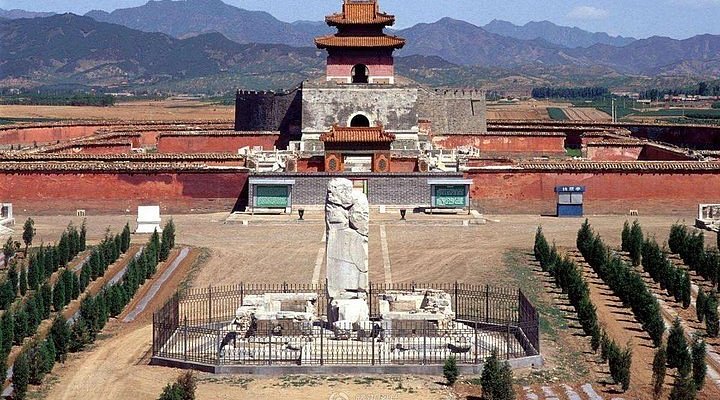
Qing Eastern Tombs.
Final Thoughts
The Eastern Qing Tombs offer a captivating journey into the past, showcasing the grandeur and traditions of the Qing dynasty. With a little planning, your visit can be both enriching and memorable. Whether you are an avid history buff or simply seeking a unique cultural experience, this site promises to leave you with lasting impressions of China’s imperial legacy.
Tickets: Prices, Booking, and Tips
Visiting the Eastern Qing Tombs: Ticket Information and Helpful Tips
Exploring the Eastern Qing Tombs (清东陵) offers a captivating glimpse into the grandeur of Qing Dynasty history. To make the most of your visit, understanding the ticketing process, pricing, and some insider tips can enhance your experience.
Ticket Prices
- General Admission:
- Approximately 80 RMB (about $12 USD) for adults.
-
Discounted rates may apply for students and seniors, so be prepared to show relevant identification.
-
Guided Tours:
-
Prices for guided tours can vary significantly based on the provider and inclusions. Expect to pay around 200-500 RMB (approximately $30-$80 USD) for a day-long tour that may also cover nearby attractions such as the Huanghuacheng Great Wall.
-
Transportation Costs:
- If you opt for a private car rental or guided transfer from Beijing, prices typically range from 500-800 RMB (around $75-$120 USD), depending on the service and vehicle type.
Booking Options
- Online Reservations:
-
Many tour operators and travel platforms offer pre-booking options. Websites like TripAdvisor, Viator, or local Chinese travel agencies can provide various packages, including transportation and guided tours. Make sure to read reviews to choose a reputable option.
-
On-Site Purchases:
- Tickets can be purchased at the entrance of the tomb complex. However, during peak tourist seasons, it’s advisable to arrive early to avoid long queues.
Visiting Tips
- Plan Your Day:
-
The Eastern Qing Tombs are about a 2.5-hour drive from Beijing. Allocate a full day to explore the site thoroughly, especially if you wish to visit multiple tombs and the museum.
-
Bring Food and Water:
-
There are limited dining options within the complex. Pack a lunch and plenty of water to keep energized throughout your visit.
-
Rent a Bicycle:
-
Once inside the park, consider renting a bicycle to cover more ground, particularly along the Spirit Way. This will allow you to enjoy the serene landscapes at your own pace.
-
Explore the Museum:
-
Don’t miss the museum at the entrance, which features fascinating documentaries and exhibits about the tombs and their history, including the infamous looting of Empress Dowager Cixi’s tomb.
-
Purchase Souvenirs:
-
There are souvenir stalls operated by the descendants of the tomb keepers. This is a great opportunity to find unique and authentic memorabilia while supporting local families.
-
Time Your Visit:
- Arrive early in the morning or later in the afternoon to avoid the busiest times. The tombs are open daily from 8:00 AM to 6:00 PM, so plan accordingly.
By following this guide, you’ll be well-prepared to embark on a remarkable journey through the Eastern Qing Tombs, immersing yourself in the rich tapestry of Chinese history and culture. Enjoy your visit!
How to Get There: A Complete Transportation Guide
Getting to the Qing Eastern Tombs: Your Comprehensive Transportation Guide
Visiting the Eastern Qing Tombs (清东陵) in Zunhua, Hebei Province, is a captivating journey into China’s imperial past. Situated approximately 125 kilometers (about 78 miles) northeast of Beijing, the tomb complex is accessible through various transport options. Here is your complete guide to navigating your way to this UNESCO World Heritage site.
By Car
Self-Driving:
If you prefer to set your own pace, renting a car is an excellent option. The drive from Beijing to the Eastern Qing Tombs typically takes about 2.5 hours. The route is straightforward, primarily along the Jingping Expressway (G45). Here’s what to consider:
– Navigation: Use a GPS or map application to ensure you stay on track.
– Parking: There is ample parking available at the tomb site.
Car Rentals:
Numerous car rental services operate in Beijing. Ensure you have an international driver’s license and familiarize yourself with local driving regulations.
By Public Transport
Bus Services:
For budget-conscious travelers, public buses offer a cost-effective way to reach the tombs. Here’s how to utilize the bus system:
1. Departure from Beijing: Head to the Menkunqiao Bus Station (门坎桥) in Beijing.
2. Bus Route: Take a bus bound for Zunhua or Tangshan. The journey will take approximately 3 to 4 hours.
3. Arrival in Zunhua: Once in Zunhua, you can take a local taxi or a ride-sharing service to the tomb site, which is about 30 minutes away.
Train Services:
Another option is to take a train from Beijing to Tangshan or Zunhua. Here’s how:
– Train Station: Depart from either Beijing South Railway Station or Beijing West Railway Station.
– Journey Duration: The train ride lasts about 1.5 to 2 hours.
– Local Transport: Upon arrival, use taxis or ride-sharing services to reach the tombs.
Guided Tours
For those who prefer a hassle-free experience, consider booking a guided tour from Beijing. These tours typically include:
– Transport: Round-trip transportation in a comfortable vehicle.
– Guidance: An English-speaking guide who provides insights into the history and significance of the site.
– Flexibility: Many tours also offer the option to combine visits to nearby attractions, such as the Huanghuacheng section of the Great Wall.
Tips for Your Visit
- Plan Ahead: If you intend to spend the entire day exploring, consider packing food, as the options within the complex are limited.
- Timing: Aim to arrive early to make the most of your visit, especially if you want to explore multiple tombs, such as those of Empress Dowager Cixi and Emperor Qianlong.
- Transportation Within the Site: Once inside the tomb complex, renting a bike can enhance your experience, especially for traversing the expansive grounds.
Final Thoughts
Whichever mode of transportation you choose, a visit to the Eastern Qing Tombs promises a profound connection to China’s imperial history. As you traverse the serene pathways lined with ancient sculptures and majestic tombs, you will truly appreciate the rich cultural heritage that these royal resting places embody.
Local Cuisine and Accommodation Nearby
Savoring Zunhua: Culinary Delights and Comfortable Stays
As you embark on your journey to the Eastern Qing Tombs, immerse yourself not only in the rich history but also in the local flavors and hospitality that Zunhua has to offer. This region, steeped in tradition, boasts a variety of local delicacies and cozy accommodations that will enhance your travel experience.
Local Cuisine
1. Traditional Hebei Dishes
– Guo Bao Rou (锅包肉): A beloved dish originating from this region, Guo Bao Rou features crispy fried pork with a sweet and sour sauce. It’s a must-try for meat lovers and pairs wonderfully with steamed rice.
– Niang Pi (凉皮): These cold noodles, made from wheat or rice flour, are often served with a tangy sauce and topped with fresh vegetables. Perfect for a refreshing meal during warmer months.
– Zunhua Steamed Buns (遵化包子): Local steamed buns come filled with a variety of ingredients, from savory pork to sweet red bean paste. They make for a delightful snack as you explore the tombs.
2. Popular Restaurants
– Zunhua Qingfeng Restaurant (遵化清风餐厅): Known for its authentic local dishes, this restaurant offers a warm ambiance and a menu filled with traditional favorites. It’s an ideal spot to savor Hebei’s culinary delights after a day of sightseeing.
– Lao Zunhua (老遵化): This eatery specializes in regional specialties and is famous for its hearty noodle soups, making it a favorite among both locals and travelers.
3. Street Food Stalls
– Don’t miss out on trying local street food while exploring the area. Vendors often sell delicious snacks such as jianbing (煎饼), a savory crepe filled with eggs, scallions, and various sauces, perfect for a quick bite.
Accommodation Options
1. Nearby Hotels
– Zunhua International Hotel (遵化国际酒店): Offering comfortable rooms and modern amenities, this hotel is conveniently located near the tombs. Guests can enjoy a complimentary breakfast and easy access to local attractions.
– Huangyaguan Great Wall Hotel (黄崖关长城酒店): Situated close to both the Great Wall and the Qing Tombs, this hotel offers stunning views and a peaceful environment, ideal for relaxation after a day of exploration.
2. Guesthouses
– Local Guesthouses: For a more intimate experience, consider staying at one of the charming local guesthouses. Many are run by families who can provide insights into the area and serve homemade meals, giving you a taste of authentic Zunhua hospitality.
3. Budget-Friendly Options
– Hostels and Inn: If you’re traveling on a budget, you’ll find several hostels and inns offering affordable rates. These places are often filled with fellow travelers and offer a friendly atmosphere perfect for sharing stories and tips.
Tips for Your Visit
- Pack Snacks: If you plan to spend the entire day exploring the tombs, consider bringing packed snacks or meals, as dining options within the tomb complex are limited.
- Local Souvenirs: Don’t forget to browse the souvenir stalls near the tombs, which are managed by descendants of tomb keepers. You might find unique handcrafted items to remember your visit.
By indulging in the local cuisine and enjoying comfortable accommodations, your visit to the Eastern Qing Tombs will be a truly enriching experience, combining the essence of history with the warmth of Zunhua’s culture.
Frequently Asked Questions
Frequently Asked Questions about the Eastern Qing Tombs
1. Where are the Eastern Qing Tombs located?
The Eastern Qing Tombs are situated northwest of Zunhua in Hebei Province, China. They are approximately a 2.5-hour drive from Beijing, making them an accessible day trip for visitors to the capital.
2. What are the opening hours for the Eastern Qing Tombs?
The tombs are open daily from 8:00 AM to 6:00 PM. It’s advisable to arrive early to make the most of your visit, as the site is expansive and there is much to see.
3. How much time should I allocate for a visit?
Visitors are encouraged to spend a full day exploring the Eastern Qing Tombs. This will give you ample time to appreciate the various tombs, gardens, and the museum without feeling rushed.
4. Is there an entrance fee?
Yes, there is an entrance fee to access the Eastern Qing Tombs. Prices may vary, so it’s best to check the official website or inquire locally for the most accurate information before your visit.
5. What should I bring for my visit?
If you plan to spend the whole day at the tombs, consider bringing packed food and water, as dining options may be limited. Comfortable walking shoes are also recommended, as the site covers a large area.
6. Can I take guided tours of the Eastern Qing Tombs?
Yes, guided tours are available and can enhance your understanding of the rich history and significance of the site. Many tours can be booked in advance, and some include transportation from Beijing.
7. What are the must-see sites within the tomb complex?
While there are many noteworthy tombs, don’t miss the tombs of Empress Dowager Cixi and Emperor Qianlong. The intricate carvings at their entrances are particularly stunning. The Spirit Way, lined with statues, is also a highlight that shouldn’t be overlooked.
8. Are there facilities for purchasing souvenirs?
Yes, there are souvenir stalls within the complex, managed by the descendants of the tomb keepers. These stalls offer unique items that reflect the site’s heritage, making them great for visitors wanting to take home a piece of history.
Final Thoughts on Your Trip
As you wrap up your journey through the Eastern Qing Tombs, allow yourself a moment to reflect on the rich tapestry of history and culture that envelops this magnificent site. Nestled in the serene hills of Hebei, these tombs are not just resting places for emperors and empresses; they are profound testaments to the grandeur of the Qing Dynasty and its enduring legacy.
A Journey Through Time
Visiting the Eastern Qing Tombs offers more than just a glimpse into royal burials; it immerses you in a narrative woven with stories of power, artistry, and the spiritual beliefs of an era long past. Here are a few final thoughts to enhance your experience:
-
Embrace the Serenity: The tranquil landscapes surrounding the tombs evoke a sense of peace that contrasts beautifully with the grandeur of the structures. Take time to wander the Spirit Way, where the majestic stone statues guide you into a world where the past and present coexist harmoniously.
-
Seek Out Hidden Gems: While the tombs may require restoration, the intricate carvings and faded paintings are a reminder of the artistry that once flourished here. Look closely, and you may discover beauty in the details that history has weathered.
-
Connect with Local Culture: Don’t miss the chance to purchase souvenirs from the stalls operated by descendants of the tomb keepers. These handcrafted items not only serve as mementos of your visit but also connect you to the ongoing legacy of this historical site.
The Adventure Awaits
As you leave the Eastern Qing Tombs, consider extending your adventure. With the nearby Huanghuacheng section of the Great Wall beckoning, you can combine history with breathtaking natural beauty. Whether you choose to rent a bike or take a leisurely drive, the opportunity to embrace more of China’s storied past is at your fingertips.
Ultimately, your visit to the Eastern Qing Tombs is a chance to step into a world of emperors and empresses, where each stone tells a story. As you journey back to modernity, carry with you the echoes of history that resonate within these walls, inspiring you to explore more of what China has to offer. Safe travels, and may your wanderlust lead you to new horizons of discovery!